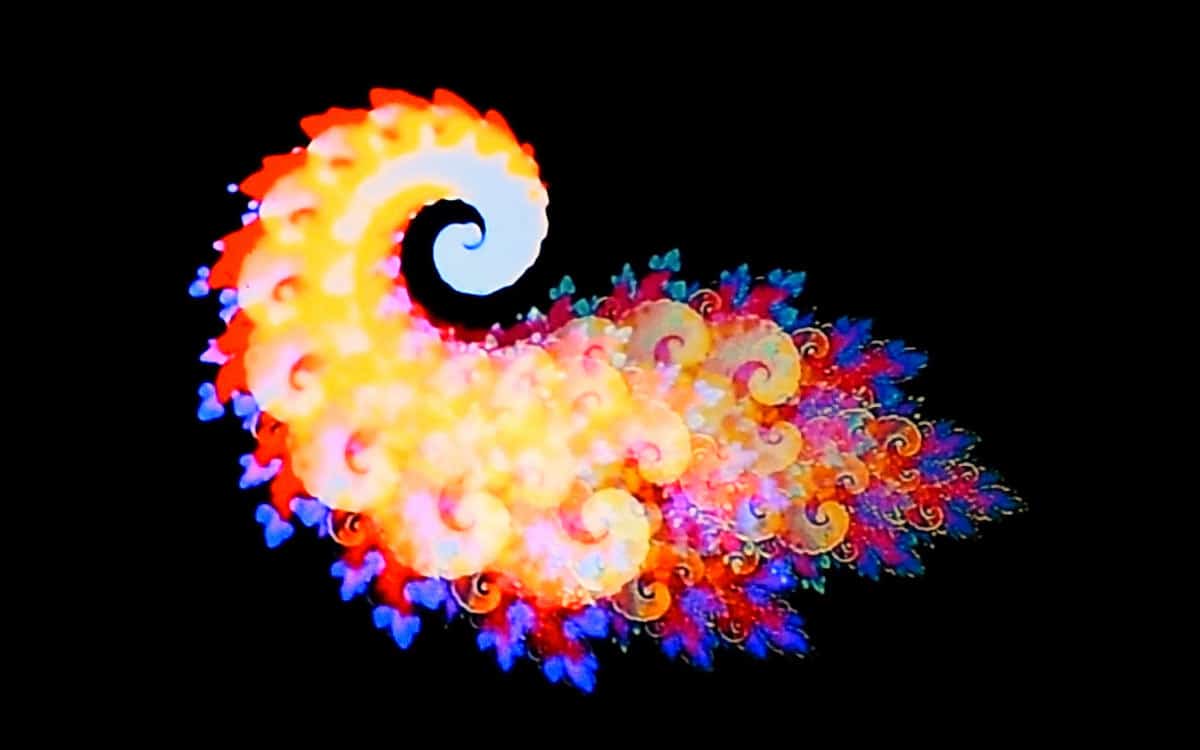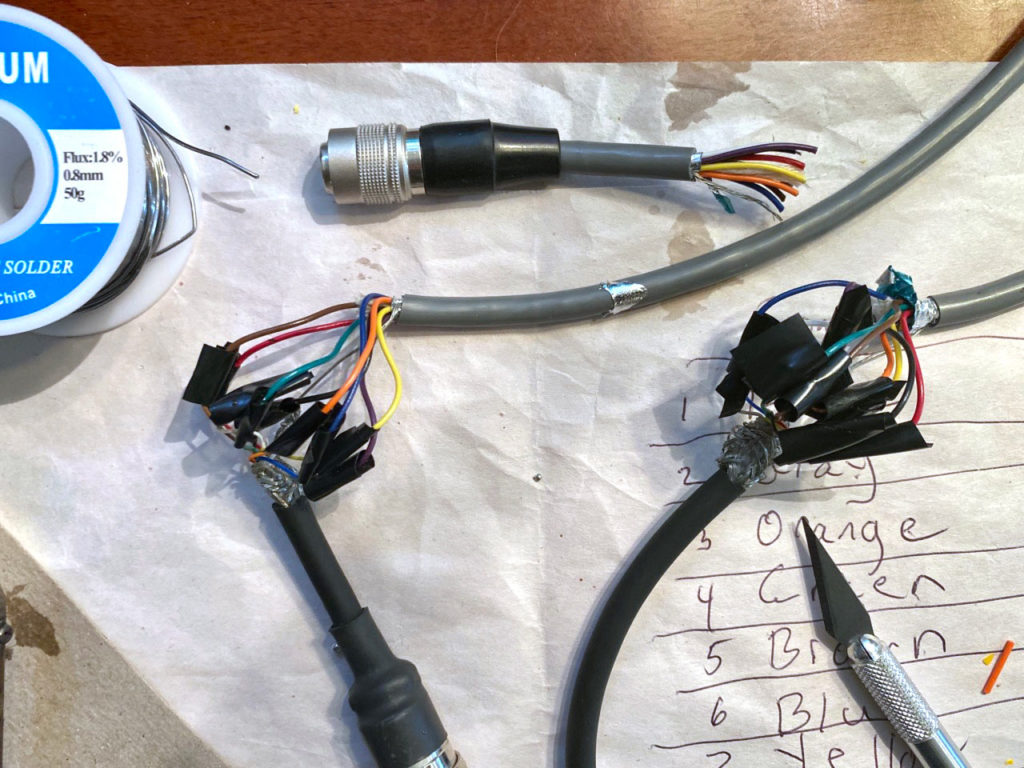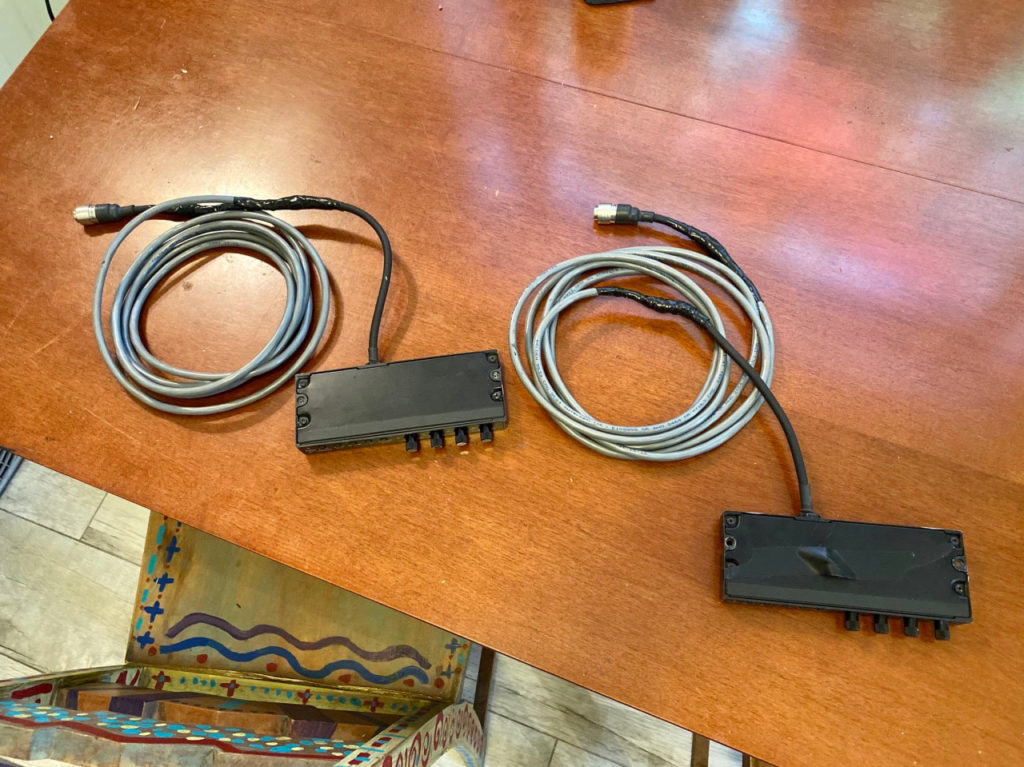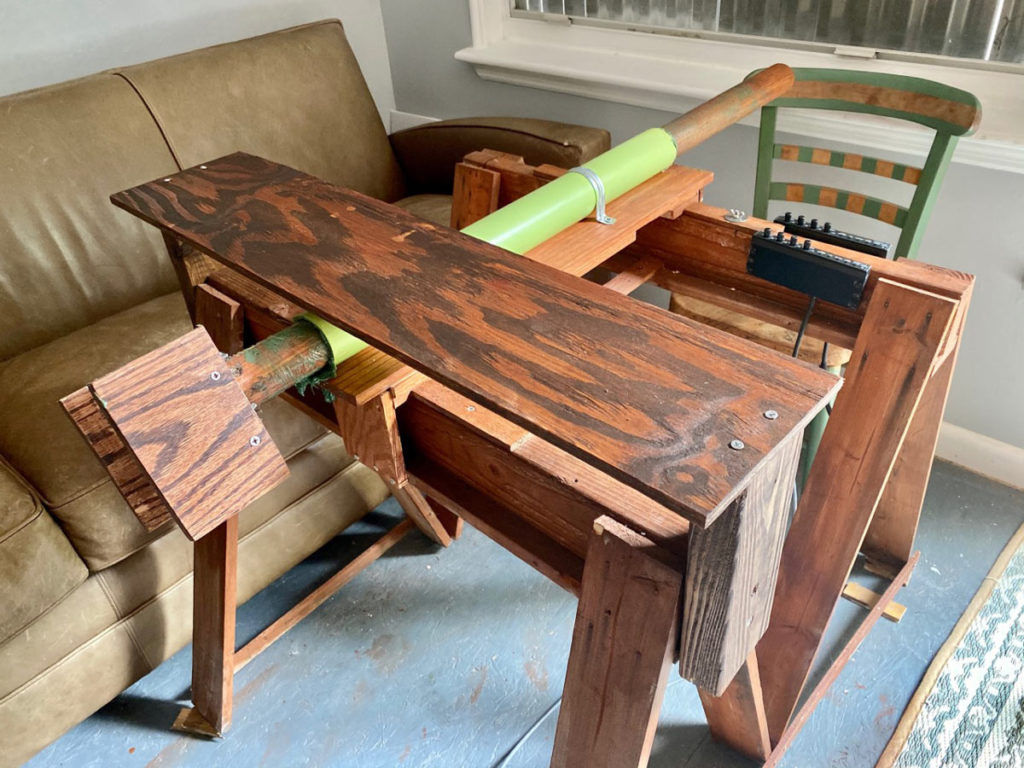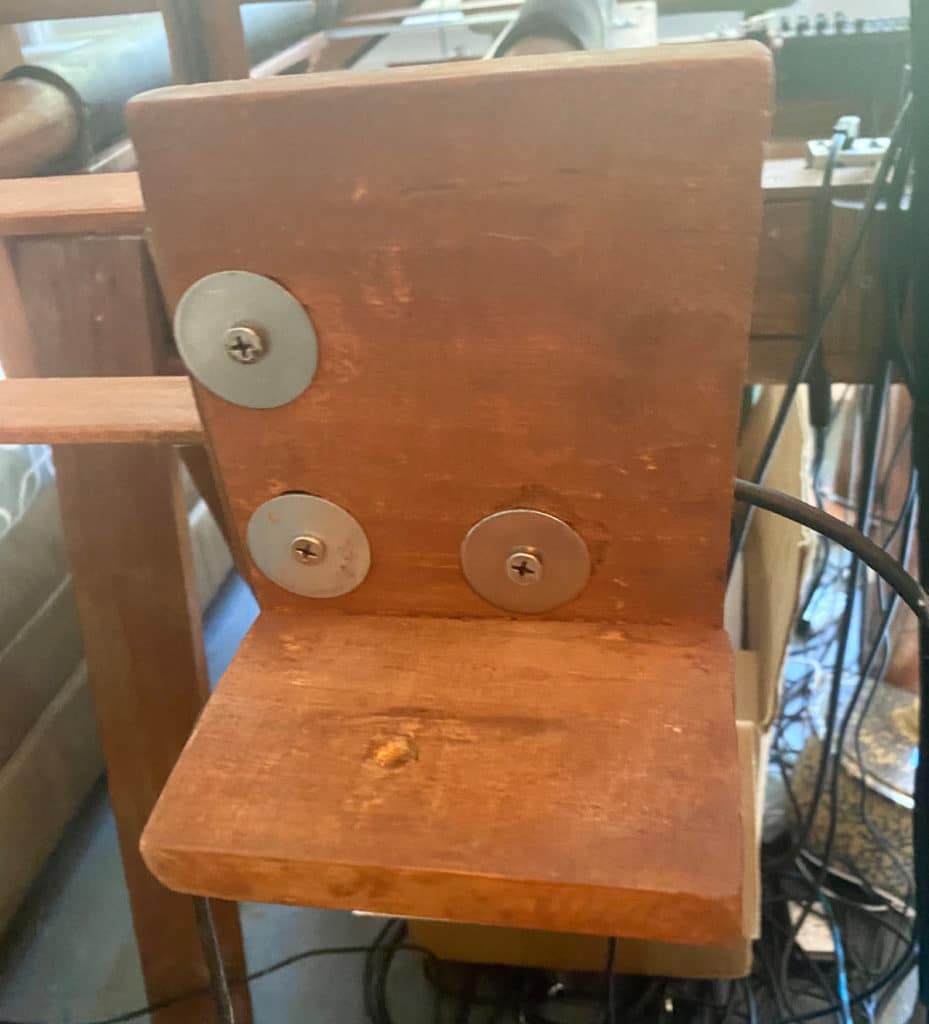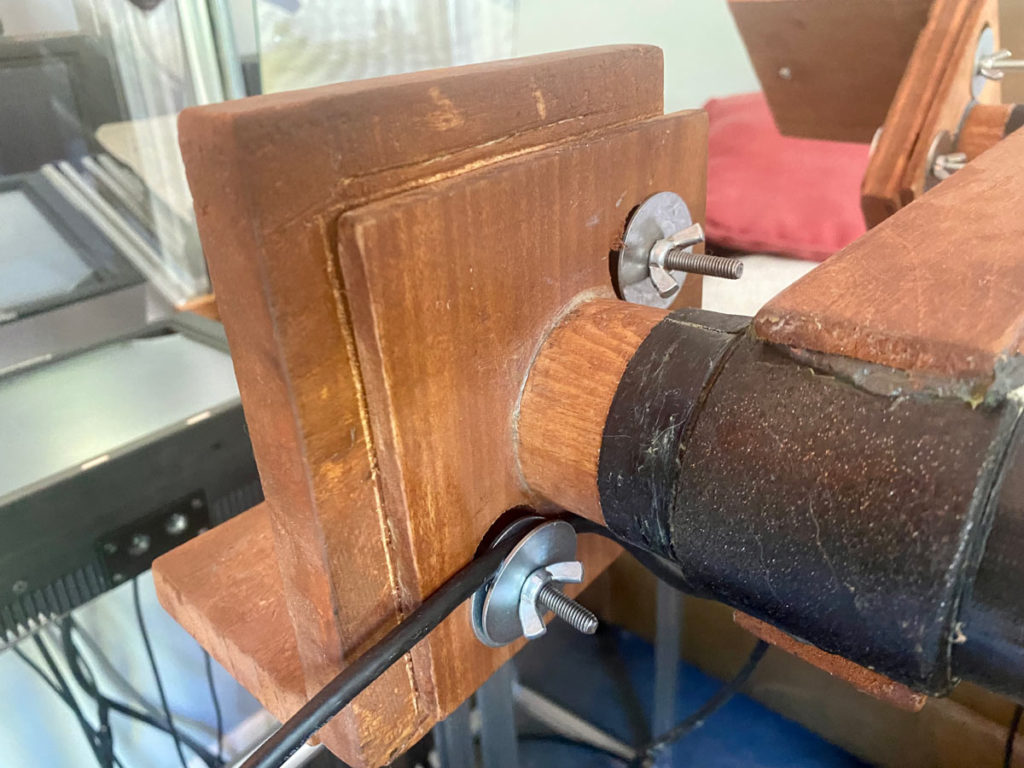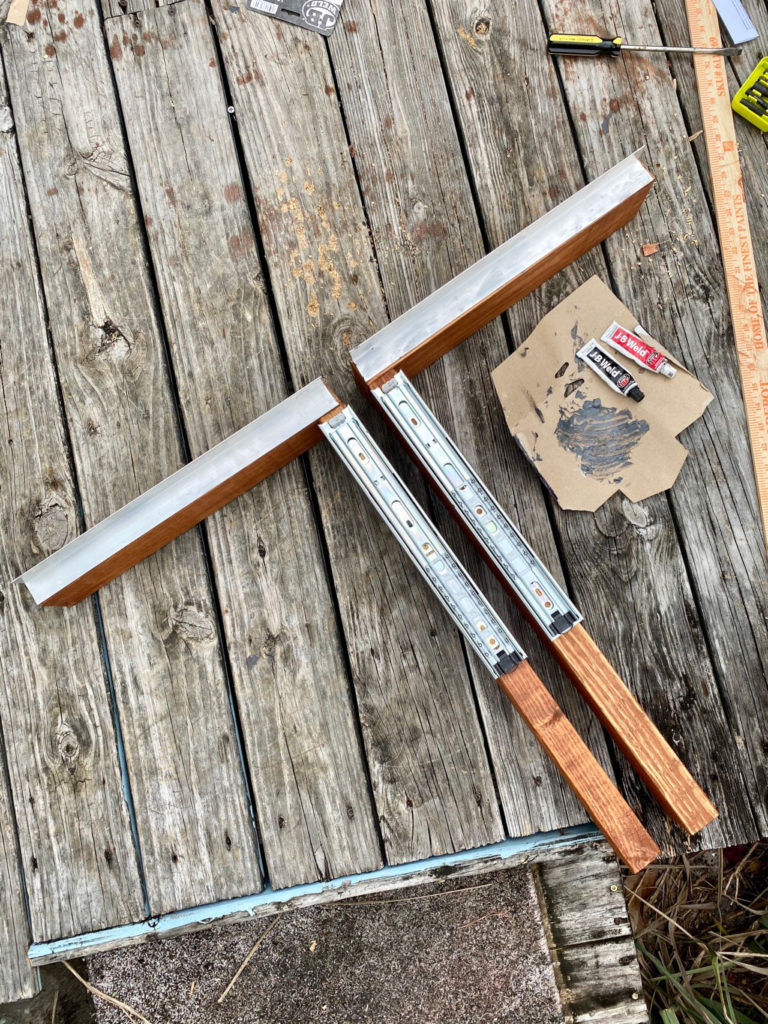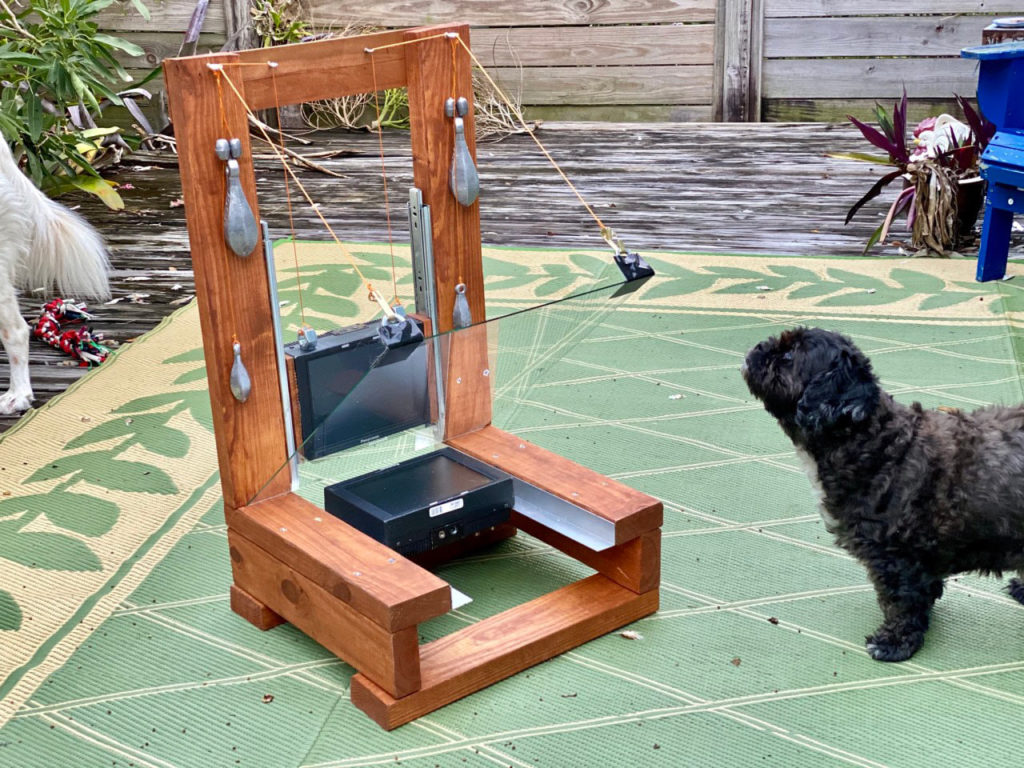
In college at UC Santa Cruz in the late 1980s I started pointing a camcorder at my little Sony TV screen, creating video feedback — TVs within TVs within TVs, receding into the distance like an infinity mirror. As I zoomed the camera, all the tiny TV screens came forward, piling on top of each other. This is where things get interesting and emergent behavior occurs: Instead of seeing a bunch of screens you get colorful patterns and rotating shapes and general freakiness!
That little TV had the all-important hue / contrast / brightness / saturation knobs. Making good video feedback is a balancing act between the image getting too bright or too dark, the screen going all white or all black, going all blue or all red, etc. The knobs allow you to fine-tune the feedback and to keep it in the delicate middlespace where interesting things happen.
Around 2003 I decided to experiment with video feedback again, but I wanted more control over the image. I knew that the rotation of the camera and its distance to the screen are important, and that small changes in either make a big difference in the feedback that’s made. Instead of hand-holding the camera or putting it on a tripod like I did at school, I wanted a way to slowly and smoothly change its position and rotation.

I used a wooden dowel with a box on one end to hold a little Sony Mavica camera (with standard definition video output). On the other end was a thin piece of wood, like a yoke, for twisting the dowel. The dowel passed through a PVC tube and was heavily greased to smooth out the movement. Now the camera could move toward and away from the screen, and 360 degrees around its axis. This was a simple contraption, suspended from the low ceiling where I lived, but it produced some pretty cool results. Instead of wildly spinning colors like you might see in a 1970s Jimi Hendrix video, I was making tightly controlled, almost mandala-like patterns. But the knobs were at one end on the TV, and I was on the other end at the yoke. I could change the camera position and I could rotate the knobs, but I couldn’t do both at the same time.









